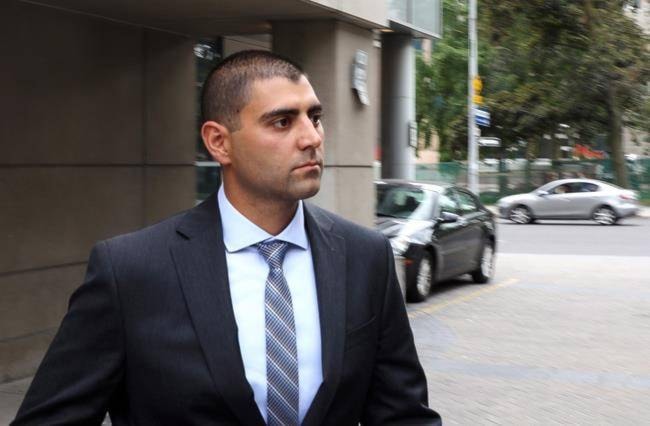HAMILTON — A Hamilton-area homeowner accused of gunning down a suspected truck thief in the dark plans to take the stand — his testimony will lean heavily on the justification of self-defence, his lawyer said on Tuesday.
In his opening statement, Jeffrey Manishen said his client, Peter Khill, wants to tell jurors his side of what happened when he used a shotgun at close range to shoot Jon Styres twice.
“This is a case about self-defence,” Manishen told jurors. “This is a case about the Crown essentially showing you there was no self-defence.”
Khill has pleaded not guilty to second-degree murder in the death of Styres, 29, in the early hours of a February morning in 2016.
Jurors have previously heard how, alerted to an intruder’s presence by his girlfriend, Khill grabbed his shotgun and rushed out of his rural Hamilton-area home. In a matter of seconds, Styres, who was allegedly in the process of stealing Khill’s 15-year-old truck, lay dying.
“It was not a matter of going outside to shoot; it was not a matter of going outside to protect a truck,” the lawyer told Superior Court. “He didn’t know if there were one or more persons in the area (but) he was determined to get control of the situation.”
Manishen said jurors will need to focus on what Khill believed at the time and will have to decide whether the force he used given the context was reasonable. Court has heard that Khill told responding officers that it was dark out, and he thought he was “in trouble.”
The first defence witness was a former military reservist, Walter Sroka, who trained Khill during his stint with the 56 Field Regiment in Brantford, Ont.
Sroka, 33, described the point of combat training is to create thorough familiarity with weapons and tactics.
“The training is based on repetition,” Sroka said. “You do it so much that you don’t have to think about what you’re doing.”
The former trainer described how soldiers are taught to aim at the “centre of mass” — the upper torso — and to fire at least twice as the best way to neutralize a target.
Jurors have heard that one shotgun blast hit Styres square in the middle of his chest, while the other hit him in the back of the shoulder. Either blast would have killed him.
But Sroka also stressed a soldier’s obligation — like that of police officers — to properly assess a situation and use the least amount of force required to deal with a threat.
“Soldiers are never trained to just charge blindly at the enemy,” prosecutor Steve O’Brien said in cross-examination.
“That’s correct,” Sroka replied.
